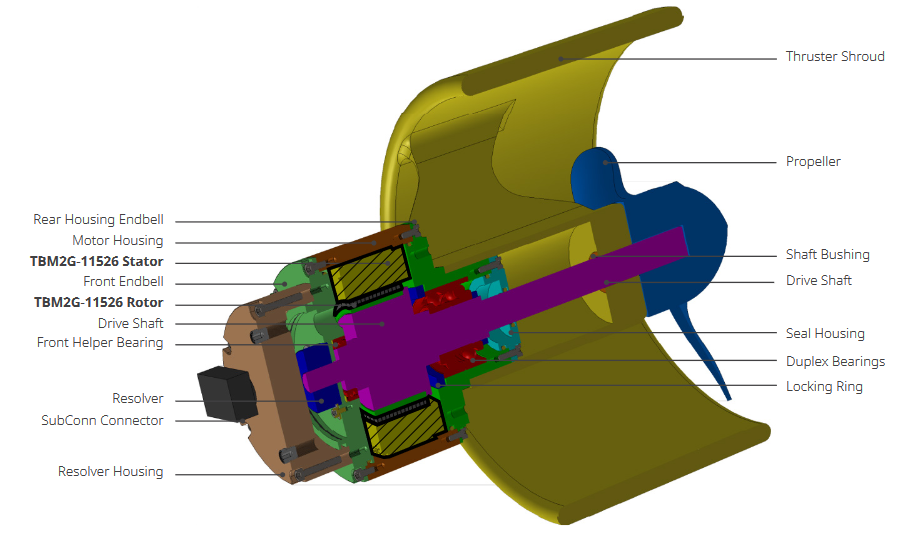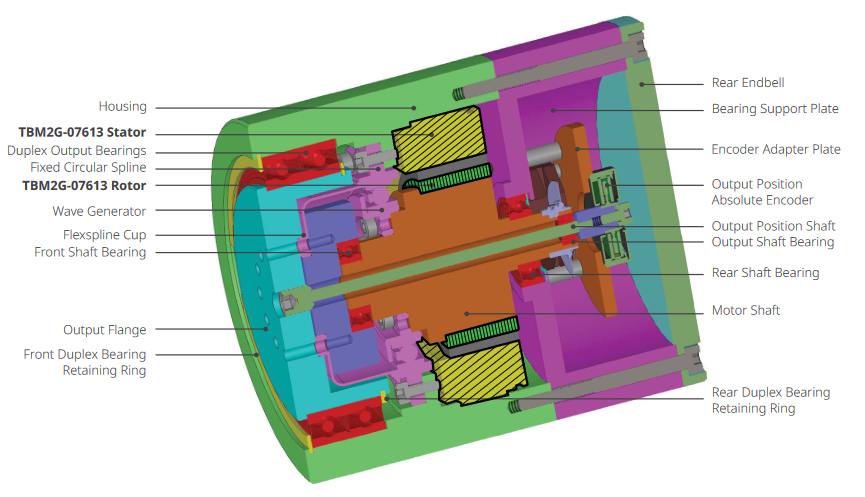
Humanoid robots are projected to become a $6+ billion opportunity within the next 10 to 15 years.1 Many labs, research entities and startup companies have taken notice, and are rushing to develop concepts and prototypes ahead of the competition. But the goal, of course, must be to design and build a robot that can be readily manufactured and delivered to market — a humanoid that customers will embrace.
Lacking the development and manufacturing resources available to well-established robotics companies, design teams that are often born in academic institutions begin by solving the challenges they understand best. For robotic motion, that means beginning with a concept for the actuators that control the movement of robotic joints.
The actuator concept may begin as a PhD thesis, for example, and the initial goal is to get a single axis to perform according to a particular specification. However, humanoid robots can easily incorporate 40 or more different joints with different motion requirements — from ankles, knees and hips that must carry and balance the entire weight of the robot to shoulders, elbows and wrists that must precisely manipulate loads throughout a wide range of motion.
Moving from a single-axis initial concept to a multi-axis working prototype requires actuators designed and sized to meet the many different requirements of all the humanoid’s joints. Achieving this large-scale integration based on the initial actuator concept is a major hurdle to achieving a manufacturable and marketable humanoid.
Kollmorgen has extensive experience helping robotics engineers take their concepts from the drawing board to successful marketable product. These three tips will help you bring a well-integrated, highly proficient humanoid to life.
1: Simplify from the Start
Actuators throughout your humanoid robot must meet different objectives, so simplifying the overall design is a challenge. Many engineering teams begin by designing and optimizing a single actuator, but they must eventually wrestle with how to make the full robot concept work in harmony.
This typically requires moving beyond the R&D stage to an investment stage, attracting the venture capital that can make the company self-sufficient. Multiple prototyping iterations may be required to achieve a robot that functions ideally. Once this design is finalized, the solution must be scaled up for delivery to market either for sale or as a service offering.
It is in this productization phase that companies may discover the hidden risk in their development process: a robot that works well in prototype but is difficult or expensive to manufacture at scale. Humanoids are so complex, with so many moving parts, that it’s easy to overlook manufacturability during the design phase. Discovering manufacturability problems too late means either a costly redesign or forging ahead with a robot that’s overly expensive to manufacture and may not be accepted in the marketplace.
To minimize this risk, we recommend beginning with a set of actuator designs that share a common basic architecture, but with the flexibility to be scaled in size and torque to meet the needs of different joints throughout the humanoid body. The actuator you perfect in the R&D phase may work well for a particular arm or leg joint, but may be too bulky, heavy or expensive to work well for other joints in the full robot design.
To control costs and ensure manufacturability, use common design elements in joints that have similar functions — such as rotary or linear actuation — while ensuring that the design can be scaled up or down in size as necessary. By taking a total-system approach from the start, you can simplify the integration of motors and other joint components into the productized robot design.
2: Choose Gear and Motor Designs that Can Serve the Needs of Most or All Joints
In human motion, knees, hips, shoulders, elbows and many other joints work together in highly dynamic coordination. To simulate these capabilities, a humanoid robot may require 40 degrees or more of freedom. Your engineering team must model each of these axes to understand the exact torque requirements at the output of each gearbox.
Based on this analysis, you can specify the most appropriate gearing for each joint. We believe it is essential to base the motor design on the gearing design, rather than the reverse. For most humanoid robot joints, harmonic gearing, also known as strain-wave gearing, will enable the lightest, most compact joint, with zero backlash — crucial considerations for optimizing the overall size and precision of your robot.
Harmonic gearboxes typically provide a gear reduction ratio in the range of 80:1 to 180:1. For humanoids to keep their balance and do effective work in an unpredictable environment, they need joints that can accelerate/decelerate relatively quickly. You will need to fit these gear sets with motors that can provide consistent torque across a wide speed range, including speeds in the range of 2000 rpm or higher.
To control costs and ensure manufacturability, look for harmonic gearing that is available off the shelf in sizes that will suit the requirements of as many rotary joints as possible. Then look for a motor design that scales and performs to meet the diameter, speed and output torque rating requirements you have identified for each of your selected harmonic gearboxes.
3: Look to Kollmorgen’s TBM2G Frameless Servo Motors to Simplify Integration
Practically every frameless servo motor on the market today is designed for purposes other than robotic joints. For example, motors designed for drones deliver optimum torque only within a narrow speed range. Kollmorgen’s TBM2G motors are different. They are specially designed to be a robot-ready.
TBM2G motors are sized to integrate easily into the widely available harmonic gearing that is most appropriate for use in robotic joints. And they are available in a full range of sizes to fit virtually every humanoid joint, for example from larger hip and knee joints to more compact shoulders, elbows and wrists. While most frameless motors are available in only two or three frame sizes, TBM2G motors offer seven different diameters, ranging from 50 mm to 115 mm, and three stack lengths of 8 mm, 13 mm and 26 mm — a total of 21 sizes.
These motors are also designed to deliver consistent torque across the full speed range, meeting the exceptionally dynamic motion requirements that differentiate humanoids from many other robotic applications. And they provide exceptional performance at a maximum winding temperature of only 85°C. Other motors in the same class only deliver full performance while operating as high as 155°C, a temperature that can quickly degrade gearing lubricants and affect the reliability of electronic feedback components.
Bonus tip: Collaborate with an Expert
Kollmorgen is more than a motion supplier. With hundreds of years of collective experience and thousands of successful applications, we are committed to helping robotics engineers succeed. We understand what robotic motion requires, from high-productivity industrial cobots, to precise and delicate surgical robots, to the rising generation of humanoid robots that promise to free humans from repetitive, arduous and sometimes dangerous tasks — while enabling new productivity and possibilities.
Ready to bring your humanoid concept to life? Contact us at www.kollmorgen.com/en-us/service-and-support/contact-us to discuss your needs and goals with a Kollmorgen robotics expert.
1. Humanoid Robots: Sooner Than You Might Think, Goldman Sachs, November 15, 2022















